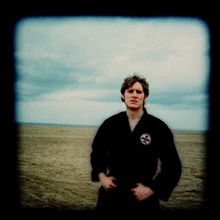Toshu Jutsu
Toshu Jutsu teaches students the nature of violent scenarios, teaches
correct technique and then shows the student how these techniques can be drilled and thoroughly learnt.
Toshu Jutsu teaches a range of fighting ranges for a mutual confrontation
- Long to mid range (kickboxing range) we train kicks and punches
- Mid range (boxing range) we train punches, blocks, parries, locks, traps, flicks, bumps
- Mid to close range (elbow and knee range) we train powerful destructive strikes
- Close range (the clinch) we teach clinch techniques ("dirty boxing"), takedowns, chokes, locks
and throws
- Ground range (groundwork) we teach practical ground grappling techniques including locks but also
the principles of hooking and the guard
Toshu Jutsu also teaches defences when the defender is in a different situation to the
attacker for example:
- Defender on the ground being kicked
- Defender on the ground, attacker in the mount position
- Attacker stood, defender kneeling
and so on...
Toshu Jutsu does not only teach self defence techniques but teaches them in a tried-and-tested
way using Kata that are hundreds of years old. The kata (forms) act as a mneumonic (memory aid) device for the many techniques
we learn.
Many Karate-Do clubs simply teach the Bunkai (applications) as they appear at face value but we teach
a plethora of Oyo (real applications) which include takedowns, shoots, locks, pressure points, joint manipulation and so on.
We teach students to fight in any scenario, to have an awareness of the nature of violent confrontation;
we also drill these responses using kata, flowdrills, pushands, sticking hands and many other techniques to build responsiveness.
Toshu Jutsu allows students to test their competancy using many different methods:
- Stand up fighting (ie kickboxing)
- groundwork grappling
- clinch wrestling
- one step kumite
Toshu Jutsu does firmly believe in teaching
Okinawan/Japanese cultural and discipline aspects but paramount is the ability to defend oneself.
WHAT IS THE BUSHINKAI METHOD
Our system may be broken down
as follows:
1) Acts of Physical Violence are Habitual not random. We learn what form these threats take.
2) There are
only four ways to defend against an attack (avoid, block, parry or counter-pain)
3) There are finite fighting ranges (projectile
range, weapon range, kicking range, punching range, grappling range etc)
4) Our retaliations may take the form of strikes,
flicks, disractions, bumps, throws, locks, nerve holds etc
So when we have identified the attacking range, the nature of the attack, how we are
to avoid it and how we are to retaliate, we must apply our criteria to the retaliation we use. There are Five Principles we
use. Then the following process takes place:
1) Drill the techniques using solo kata
2) Drill the techniques using 2 man drills
3) Test the techniques in Free
practice.
Below are some quotes from historians concerning the arts of Toshu Jutsu
and Hakuda:
'The old martial arts of the Ryukyu Islands exist of TOSHU JUTSU,
the way of the empty hand and Emono-jutsu, the way of the weapons. Nowadays, these martial arts are called Karate and Ryukyu
Kobujutsu, respectively.'
Motokatsu Inoue
'There once lived in Nagasaki a physician named Akiyama, who went to China to study
medicine. There he learned an art called HAKUDA which consisted of kicking and striking, differing,
we may note, from jujutsu, which is mainly seizing and throwing.'
Jigoro Kano
The Japanese referred to these Chinese forms as HAKUDA
or Shuhaku, both terms meaning 'to beat by hand'. The term KEMPO was
also used by the Japanese to describe any and all empty-hand methods of fighting in a sparring manner.
Classical Budo, Donn F Draeger
There is progression from bujutsu (martial techniques) to budo (martial way) to BUSHIN (martial spirit). The techniques (jutsu) themselves are vehicles that
allow the practitioner to approach the two higher levels of ethical behavior and spiritual insight.
Budo Secrets, John Stevens

